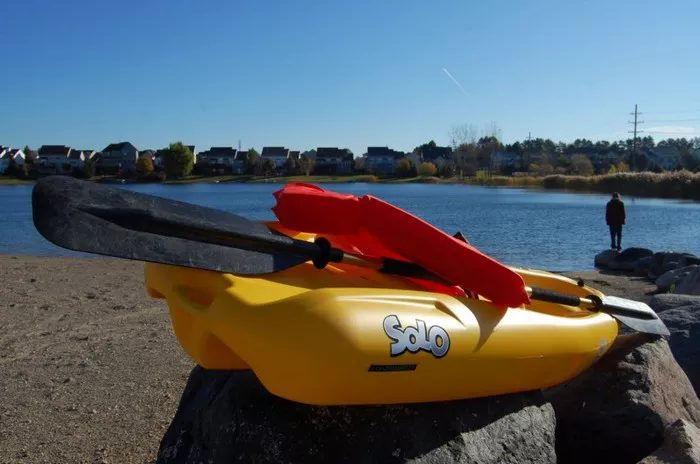Keeping your Pelican kayak dry is essential for both safety and maintenance. Whether you’re a seasoned paddler or a beginner, knowing how to effectively remove water from your kayak can prevent potential damage and prolong its lifespan. In this article, we’ll guide you through identifying the source of water ingress, draining procedures, and preventive measures to keep your Pelican kayak in optimal condition.
SEE ASLO: What Is Recreational Water Sports
1. Identify the Source
Drain Plug:
Most Pelican kayaks come equipped with a drain plug located at the bottom of the hull. The drain plug is the most common entry and exit point for water in the kayak. It’s essential to know where this plug is and how to use it. Typically, the drain plug is located at the stern (back) of the kayak. To access it, simply flip the kayak over or lift the stern slightly. Unscrew the plug to allow any water inside the hull to drain out.
Leaks or Cracks:
If the drain plug is secure and water continues to accumulate, you may be dealing with leaks or cracks in the kayak’s hull. These can develop over time, especially if the kayak has been exposed to rough conditions or has experienced impact damage. To identify leaks, thoroughly inspect the hull for visible cracks or weak spots. You can also fill the kayak with water while it’s on dry land and observe any areas where water seeps out, indicating a leak.
Scupper Holes:
Some Pelican kayaks are designed with scupper holes, which are small openings in the kayak’s bottom that allow water to drain naturally. These holes are particularly common in sit-on-top kayaks. While scupper holes are effective for draining water while paddling, they can sometimes become clogged with debris. Regularly check these holes to ensure they are clear and functioning properly.
2. Draining Procedures
Drain Plug Method:
The simplest and most efficient way to remove water from your Pelican kayak is by using the drain plug. Start by positioning your kayak so that the drain plug is at the lowest point, allowing gravity to do the work. Unscrew the drain plug and let the water flow out completely. Be patient, as this process might take a few minutes depending on the amount of water inside the hull.
Tilting the Kayak:
In cases where the drain plug isn’t sufficient, tilting the kayak can help facilitate water drainage. Position the kayak on its side or lift one end, directing the water towards the drain plug or the scupper holes. Make sure to tilt the kayak slowly and securely to avoid any accidental damage or injury.
Sponge or Towel:
After most of the water has drained, there may still be some residual moisture inside the kayak. A sponge or towel can be used to absorb this remaining water. Simply reach into the hull and wipe down any wet areas. This step is particularly important to prevent mold and mildew from developing inside the kayak.
Bailing:
For larger amounts of water, especially if you’re out on the water and need a quick solution, a bailer can be very effective. A bailer is a simple tool, often a small bucket or container, used to scoop water out of the kayak. Keep a bailer on hand during your paddling trips to address any unexpected water accumulation.
3. Preventing Water Ingress
Check Drain Plug:
One of the most effective ways to prevent water from entering your kayak is to regularly check the drain plug. Ensure that it is securely fastened before every trip, and inspect it for any signs of wear or damage. A loose or damaged drain plug can lead to significant water ingress.
Inspect Hull:
Periodically inspecting the hull of your kayak is crucial for preventing leaks. Look for any signs of cracks, especially after trips where the kayak may have encountered rough waters or rocky shorelines. Address any damage immediately to prevent it from worsening.
Scupper Hole Maintenance:
Maintaining clear scupper holes is essential for proper water drainage. Check these holes before and after each trip, and remove any debris that could clog them. If you’re paddling in areas with a lot of plant material or mud, take extra care to keep the scupper holes clean.
4. Additional Tips
Drying the Kayak:
After you’ve removed all the water, it’s important to dry your kayak thoroughly. This step prevents the growth of mold and mildew, which can cause unpleasant odors and damage the kayak’s material. Wipe down the kayak with a dry towel and allow it to air out completely before storing it.
Kayak Maintenance:
Regular maintenance of your kayak will help prevent water ingress and extend its lifespan. This includes checking all seals, inspecting the hull, and keeping the kayak clean and dry. Store your kayak in a dry, shaded area to protect it from the elements.
5. Contacting Pelican
If you encounter persistent issues with water ingress or have concerns about the integrity of your kayak, don’t hesitate to contact Pelican customer service. They can provide you with specific guidance, replacement parts, or professional repair services to ensure your kayak remains in top condition.
By following these steps, you can effectively manage and prevent water ingress in your Pelican kayak, ensuring a safer and more enjoyable paddling experience. Regular maintenance and prompt attention to any issues will keep your kayak performing well for many adventures to come.

